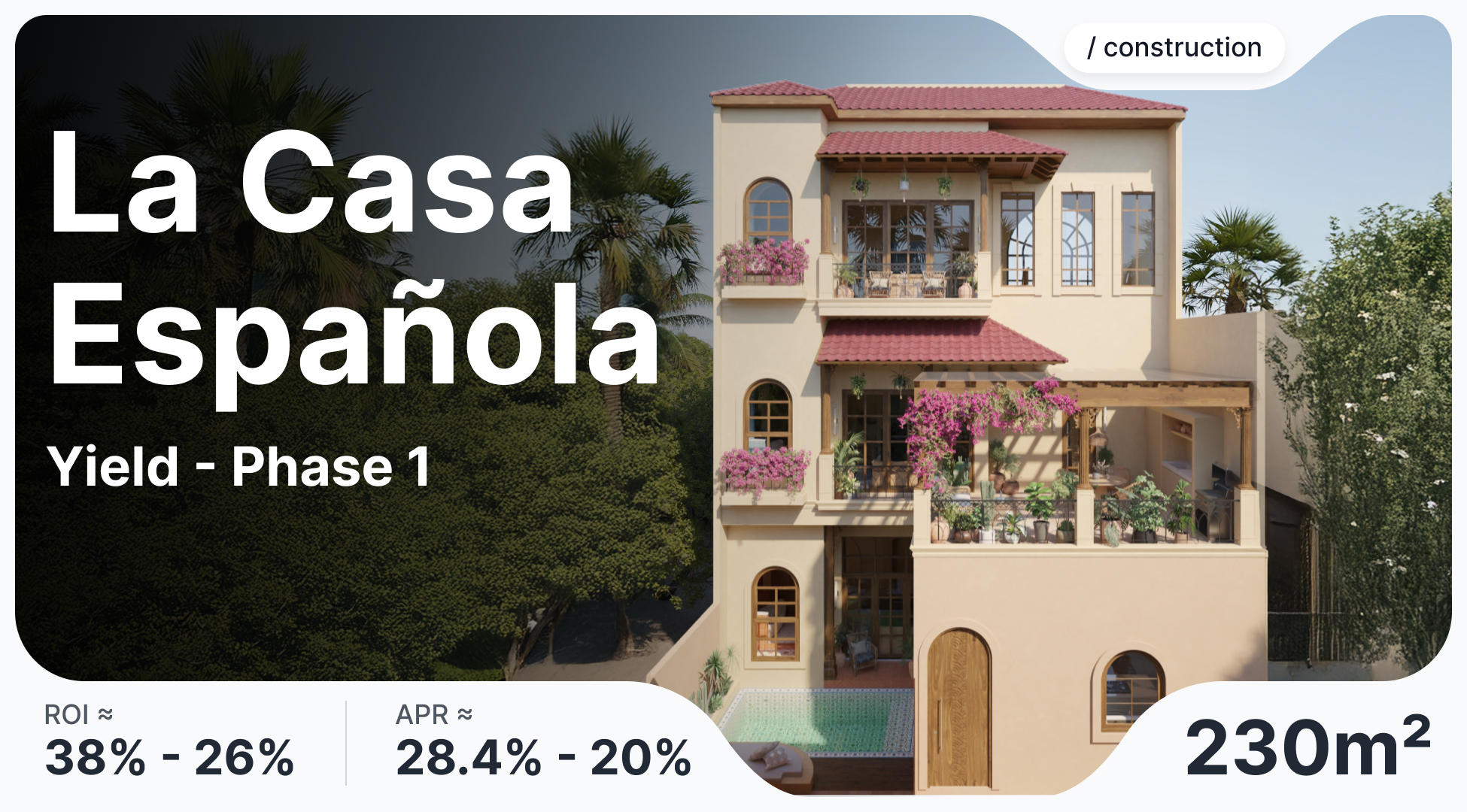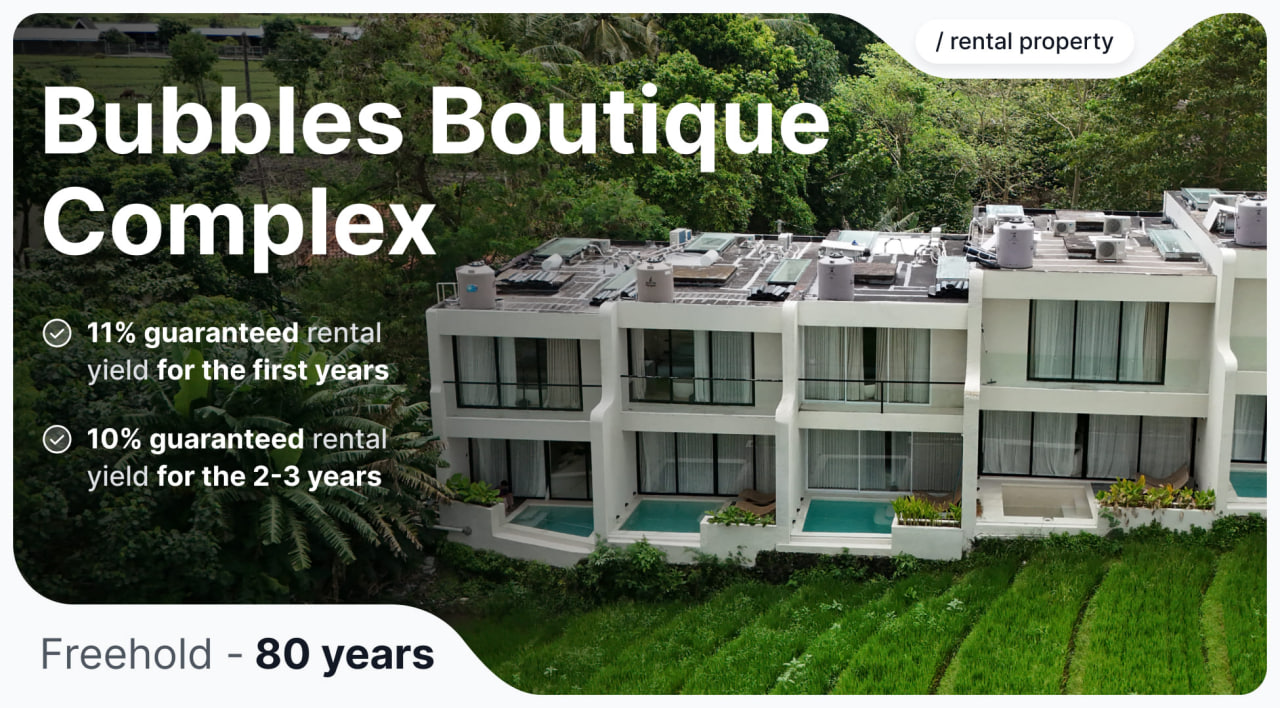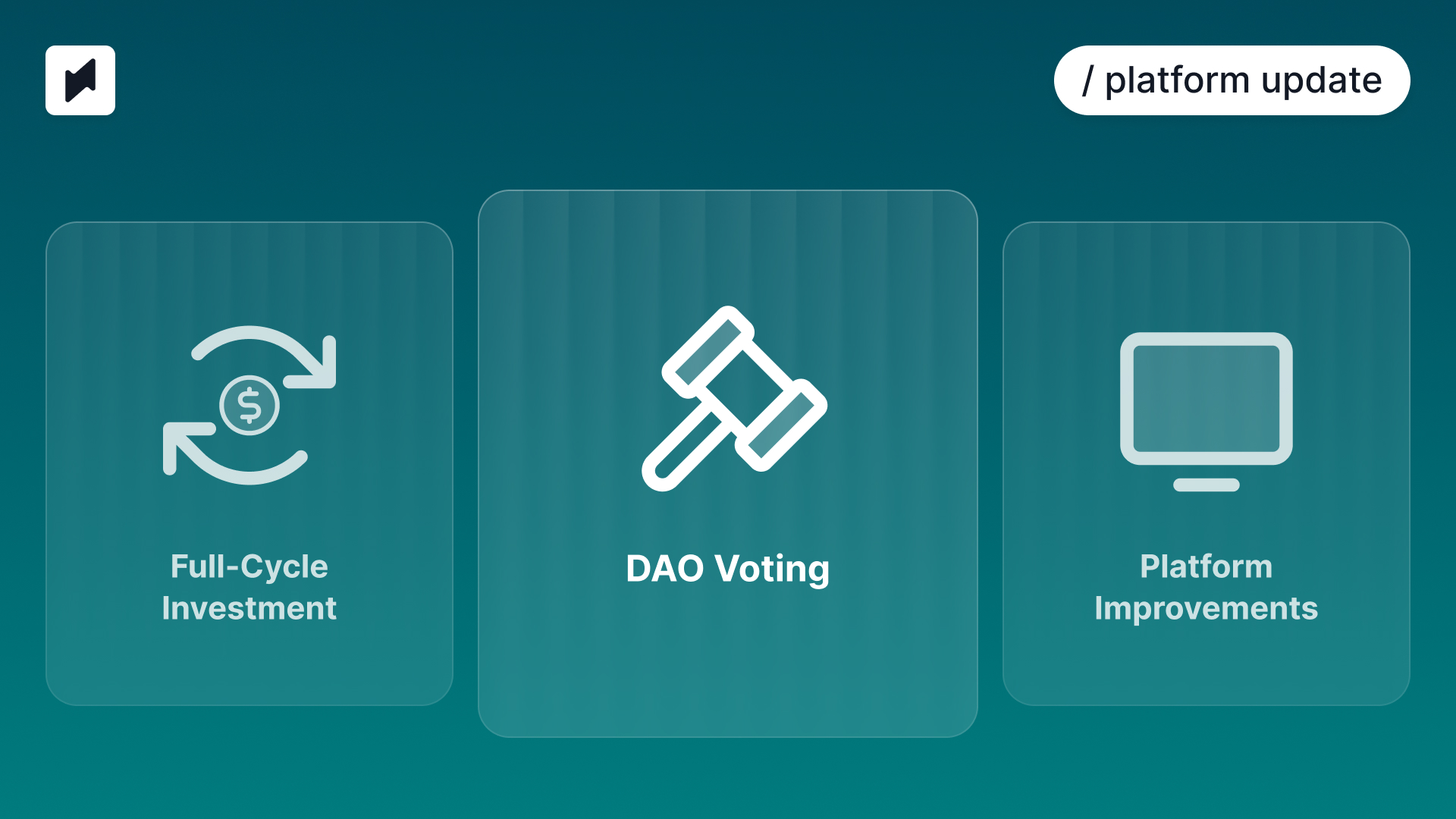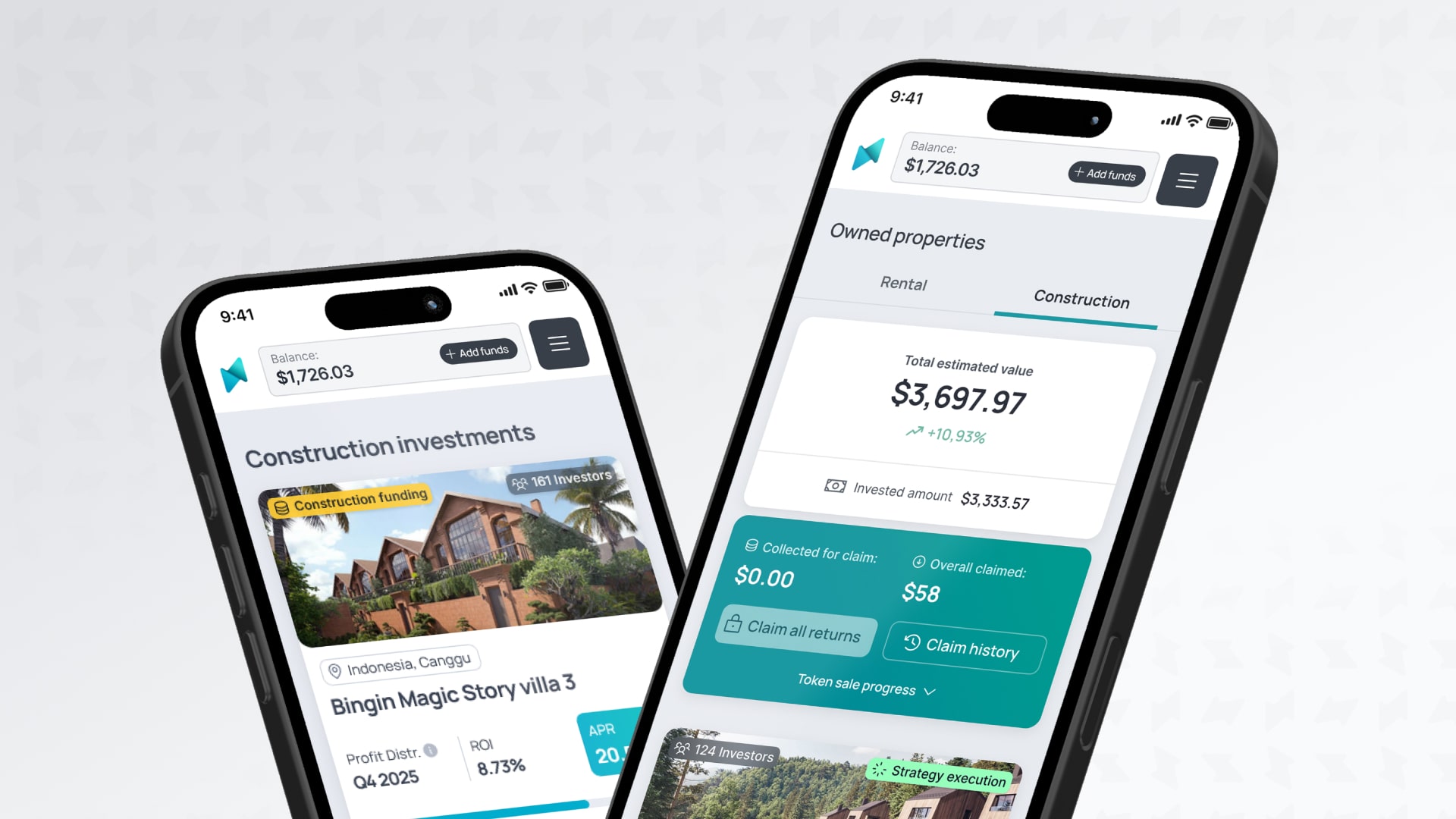Montenegro: Buy Real Estate Now Before It’s Too Expensive

When I visited Montenegro in early 2022, I was captivated by its Adriatic rocky landscapes and small charming towns. But what truly surprised me was the affordability of real estate. Intrigued, I explored further and discovered the reasons: Montenegro's youth, economic underdevelopment, non-EU membership, and a bunch of leftover unregulated constructions. At the same moment, it became clear that these low prices wouldn’t last long due to the country’s strategic location, ease of property acquisition, upcoming EU accession, growing expatriate population, and overall world political situation. This eventually led to some great deals and ventures.

Key Findings:
- Underrated Mediterranean gem: Montenegro is an emerging destination with stunning natural beauty, offering a mix of beaches, mountains, and other natural landscapes, with historic towns appealing to tourists and investors alike.
- Tourist trends: Montenegro's tourism sector has gained notable popularity, experiencing a 7% increase in tourist arrivals year-on-year in June 2024, with foreign visitors comprising 90.27%, primarily from Serbia, France, and the UK. Budva remains the most popular destination, drawing 40.2% of tourists
- Sights to please everyone: Montenegro offers diverse sights across different regions, such as luxury marinas in Tivat, UNESCO historic sites in Kotor, vibrant nightlife in Budva, and unspoiled nature in Kolasin, ensuring something for every type of visitor and investor.
- A magnet for people of various social backgrounds: Montenegro attracts a wide range of international residents, including digital nomads, political refugees, wealthy Eastern Europeans, Western Europeans seeking lower costs, and entrepreneurs from Turkey. This diverse influx supports the local economy and real estate market.
- Ease of acquiring real estate: Foreign investors face no restrictions when buying property in Montenegro; the purchase and registration processes are no different from the rest of Europe. However, buyers should be cautious of properties that are not yet legalized.
- Almost in the European Union: Long-awaited Montenegro's EU accession is inevitable and could significantly raise living and real estate costs, making now an ideal time to invest.
- Real estate investment options: There are multiple investment options, including the traditional purchase of properties to rent out or resell after renovation, and modern ways of investing through the purchase of tokenized shares on platforms like Binaryx.
Underrated Mediterranean Gem
Montenegro is a beautiful country that offers a variety of attractions and activities for visitors to enjoy. It has natural landscapes, including mountains, lakes, and beaches, as well as historic towns.
- Natural beauty: The vast coastline along the Adriatic Sea introduces picturesque and pristine beaches with crystal-clear waters, while the mountains, which make up 85% of the country, offer plenty of space for climbing, skiing, and getting alone.
- Rich architecture: Montenegro's architecture is a unique blend of Roman, Venetian, Ottoman and modern influences. The country features important cultural and historical monuments from the pre-Romanesque, Gothic and Baroque periods.
- Affordable prices: The lower cost of living compared to Western Europe offers cheap dining and entertainment options and competitive prices for local goods and services, while the straightforward process of obtaining residency attracts both political refugees and digital nomads.
- Growing real estate market: In coastal Montenegro, the rental real estate market has surged by 80-100% over the past year. This significant increase is attributable to a low base effect and does not suggest market overheating.
- NATO member and EU candidate: With Montenegro's current NATO and imminent EU membership presenting, the country maintains political stability and transparent legislation that safeguards property rights and investor interests.
- Strategic location: Proximity to major European cities offers easy access to the rest of the Mediterranean region through Montenegro International Airport.
Check out the flight times to the main European cities below:

Tourist Trends in Montenegro
Often overshadowed by Croatia, Greece, and Italy, Montenegro highlights rising popularity among global travelers. According to the available data, Montenegro's tourism sector experienced notable growth, with tourist arrivals increasing by 7% year-on-year in June 2024. Foreign visitors comprised a significant majority at 90.27%, while domestic visitors accounted for 9.63%. The largest influx of foreign tourists originated from Serbia (15.7%), followed by France (9.7%) and the United Kingdom (6.3%). Among destinations, Budva was the standout favorite, drawing 40.2% of tourists, with Herceg Novi (12.1%) and Podgorica (10.4%) also being popular.

In August 2023, the country recorded 241 thousand tourist arrivals, which marked a peak of the year and of the entire counting period. The August of 2024 tends to beat this record, judging by June 2024 beating June 2023 by 5.1%. In the chart we can clearly observe, that Montenegro’s tourism industry clearly shows strong seasonal patterns, with the majority of visitors arriving during the summer months due to the Mediterranean climate. Overall, the annual tourist numbers have doubled over a decade, growing from about 1.2 million in 2013 to 2.4 million in 2023.
Sights and Real Estate to Please Everyone
Montenegro offers a diverse array of locations both for living and real estate investment, each with its unique appeal and potential. Whether you're looking for luxury Adriatic villas in Kotor or mountain chalets in Kolasin, there's something to suit every investor's preferences and strategies.
Tivat

Tivat Sights: The city has beautiful beaches and vibrant nightlife with a lot of local bars. Home to Porto Montenegro, a luxury marina and yachting paradise.
Tivat Real Estate Investing: Premium properties, high rental demand, especially from international and wealthy tenants. Near the international airport.
Kotor

Kotor Sights: The town has a UNESCO World Heritage Site and a historic old town with medieval architecture and stunning bay views.
Kotor Real Estate Investing: Highly sought-after location with limited supply. Nearby areas are ideal for luxury and rental property investments due to consistently high demand from tourists and expatriates.
Budva

Budva Sights: The city is a hotspot for summer tourism, famous for its medieval old town, sandy beaches, and vibrant nightlife.
Budva Real Estate Investing: Has high rental demand due to its popularity among regional tourists. Dense development, however, is always attractive to Eastern European investors.
Herceg Novi

Herceg Novi Sights: The city is on the northern coast with scenic views of Kotor Bay, historical fortresses, and lush greenery.
Herceg Novi Real Estate Investing: More affordable compared to Tivat and Kotor, with significant upside potential. Attracts increasing interest from international developers and tourists.
Kolasin

Kolasin Sights: The small town is famous for its ski resort and surrounding unspoiled nature.
Kolasin Real Estate Investing: At first glance, demand may look moderate and seasonal, limited to winter sports, however, the variety of nearby natural resorts, such as Biogradska Gora, Bjelasica Mountains, and Durmitor National Park attract seekers all year round.
Podgorica

Podgorica Sights: Podgorica is the country’s capital with limited tourist attractions, mainly a commercial and administrative hub.
Podgorica Real Estate Investing: Not great for significant real estate investment compared to coastal areas and northern mountain regions. However, there are commercial real estate options to be found.
A Magnet for People of Various Social Backgrounds
Montenegro's appeal has extended beyond tourists; in fact, tourism is no longer the main driver of economic growth. Now, the scales are tipping towards diverse and dynamic groups of new international residents. They are attracted by the relatively simple procedure for getting residency and by the low cost of living. This shift in demographics is having a significant impact on the real estate market.

Here are some key groups moving to Montenegro and what they're looking for:
- Digital Nomads: This group is attracted by Montenegro's affordable cost of living, favorable climate, and local nomad visa. They mostly prefer mid-range rentals, thus contributing to a steady demand for rental properties.
- Political Refugees from Ukraine and Russia: Fleeing political instability and seeking better opportunities, these individuals often launch local businesses and take local jobs, thus supporting the local economy and utilizing services. They prefer long-range rentals or buying affordable apartments.
- Wealthy Russians, Ukrainians, and Belorussians: These individuals often seek luxury accommodations in high-end developments like Porto Montenegro and Porto Novi. They prefer villas and property investments, thus driving demand for premium real estate.
- Western Europeans Seeking Lower Taxes and Living Costs: With rising costs and taxes in Western Europe, many people, mostly Germans, are relocating to Montenegro for its lower taxes and living expenses. They acquire residential properties, often outside the luxury developments, providing a steady demand for mid-range real estate.
- Right-wing Europeans: Feeling the lack of freedom of speech in their home countries, they are moving to Montenegro due to its lack of regulations. They rarely buy properties and settle permanently, however, adding some demand for rental real estate.
- Turks: Turks leaving home inflation and politics are predominantly entrepreneurs, starting local businesses in Montenegro. They tend to buy houses.
- Crypto Enthusiasts: These are coming after the unregulated cryptocurrency market due to the lack of a central bank. Besides, Vitalik Buterin regularly organizes events like Zuzalu in Montenegro. Prefer to live in rented apartments and invest in tokenized real estate, if any.
All these groups have in common is that they make a better and more lasting contribution to the economy of Montenegro than tourists. They pay income and social security taxes, drive local consumption year-round, start businesses, and boost the local economy, making it more vibrant and diverse. They’ve created a demand for international schools, so now there are several private English and Russian schools along the coast. And of course, they balance out the demand for real estate, making it less dependent on seasonality.
Ease of Acquiring Real Estate
There are no restrictions for foreign investors to buy properties in Montenegro. All you need is a passport and the funds available to be transferred from a bank. The process of property verification before purchase and registration is similar to those in Europe and does not require knowledge of local specifics. It includes signing a preliminary sales agreement with a deposit (~5%), finalizing the contract with a notary, making the full payment, registering the property with the local land registry, and lastly, paying the transfer tax (around 3% of the property value) upon receiving the title deed.
The only thing to pay attention to when buying real estate in Montenegro is the large number of still-not-legalized properties. There were plenty of unregulated constructions back in the late 2000s, and the process of legalization has not yet been completed. For this reason, these units lack demand; prices are usually much lower compared to new buildings and those from the last century. Therefore, seriously think before buying such a thing if you are suddenly offered a favorable deal; even if the property is legally all right, it will still be difficult to sell it.
Almost in the European Union (Is It So?)
Now Montenegro attracts digital nomads and investors with its relatively low cost of living, ease of acquiring real estate, and minimal bureaucracy. Prices for housing, dining, and services are way cheaper compared to many Western European countries, and there are also no restrictions for foreign property buyers. All of this will change once Montenegro becomes a member of the EU. European standards and regulations, more rigid rules, and the flood of northern Europeans to the sunny Mediterranean coast will inevitably lead to an increase in prices for all aspects of life and business in Montenegro.
If this isn't the first time you've been curious about investing in Montenegro, you've most likely heard this argument from local real estate agents. At first, they called 2017 the year of accession, then 2025, and now we hear 2027 more and more often. There is a certain amount of irony in the fact that this argument is many years old, but strangely enough, it does not lose its relevance. Simply because it remains valid.

Montenegro first started the discussion about joining the EU accession process back in November 2005, when the country was in the State Union with Serbia. In May 2006, Montenegro held an independence referendum, became a sovereign state, and soon after began its own negotiation process with the EU. On October 15, 2007, Montenegro signed the Stabilization and Association Agreement, and later in 2010 the country received the official status of a candidate country. Since then, Montenegro has been bringing its legislation in line with EU requirements. The EU strategy published in February 2018 noted that Montenegro could potentially be ready to join the EU in 2025.
Montenegro is on the edge of significant changes, whether it takes one year or three. Shortly, the process of his little country's integration into the European Union may radically accelerate on a whim. For the European Union, this is a strategic step aimed at expanding its influence and reducing risks from Russia’s power spreading. However, for us, potential investors, it means one thing: soon, prices in Montenegro may rise drastically, and bureaucratic procedures will become more complicated. In addition, it is important to note that the country has been in NATO since 2017, so no military border revisions by neighboring countries are no longer possible.
Thus, now is the best time to buy real estate in Montenegro. Use this unique moment to invest in the future while conditions remain favorable and affordable. Here is the table that projects potential real estate price changes for Montenegro when it joins the EU, based on a median of the changes observed in Bulgaria and Croatia before and after the EU accession. The first years are going to nuke the most!

Real Estate Investment Options: Three Case Studies
Montenegro's real estate market presents diverse opportunities for investors. Here, we explore three primary investment strategies: rental properties, house flipping, and fractional property investment, each illustrated with a case study to demonstrate their potential.
1. Rental Properties Case Study: Kotor Luxury Rentals
Since Kotor is a UNESCO World Heritage Site, it is a prime location for rental properties, where demand for short-term vacation rentals is high, especially during the tourist season.

Investment example: A 2-bedroom apartment in Kotor, priced at €150,000.
Rental income: Averaging €100 per night during the high season (June to September) with a 75% occupancy rate, and €50 per night during the low season (October to May) with a 50% occupancy rate.
Projected ROI: Can be around 11.5% annually, considering operating costs and property management fees.
Projected annual revenue: Approximately €20,250.
2. Flipping Case Study: Budva Renovation Project
Since Budva is known for its vibrant nightlife and sandy beaches, it offers lucrative opportunities for property flipping.

Investment Example: An old apartment in Budva was purchased for €100,000, with €30,000 allocated for renovation.
Projected market value post-renovation: €160,000.
Projected profit: €30,000 (30% increase on the initial investment) within a 6-month period.
3. Fractional Property Investment Case Study: Mount Retreat Construction Investment on Binaryx Platform
Tokenization platforms, such as Binaryx, allow investors to buy a shares of a high-value property starting at $500. On the Binaryx platform, tokenization involves converting real estate properties into digital tokens through the Polygon blockchain and leveraging the Wyoming DAO LLC Act to create the specific LLC that owns a certain property. The Binaryx platform is designed to create a scalable system where investors can own and manage property shares, and management companies, agencies, and developers can efficiently tokenize and sell their property units.

Investment Example: Purchasing 400 property tokens of Mount Retreat chalet, which is under construction, for $20,000. This is a seven-month-long investment with the possibility to convert off-plan tokens into rental property tokens after construction is finished.
Projected ROI after construction completion: $3,848 which is 19.24%
Projected rental income after construction is finished: $1,600 (8%) annually, which is higher than the market average due to location specifics and the developer’s high-quality customer service support.
Conclusion
Montenegro's combination of natural beauty, affordable living, and strategic location presents a unique opportunity for investors and expatriates. Whether for lifestyle, tourism, or financial growth, Montenegro stands out as a promising destination with a diverse and dynamic future. As the country edges closer to potential EU membership, the window for favorable investments may soon narrow, making today the ideal time to explore its real estate market.









-min.jpg)
